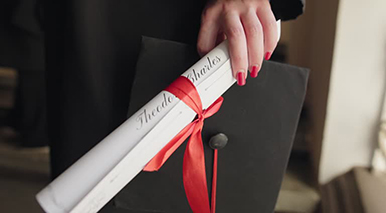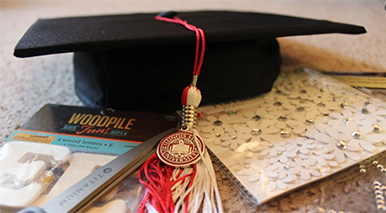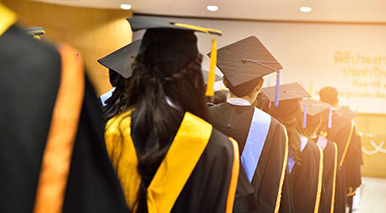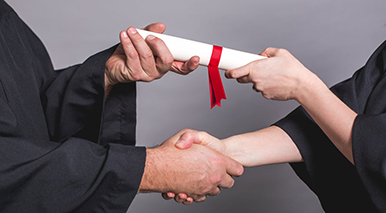
In today’s world, academic credentials hold significant value. A high school diploma is often the first step toward higher education, better career prospects, and personal growth. However, there’s a growing problem with counterfeit diplomas, including fake HS diploma. The demand for fake credentials has fueled a thriving market of diploma mills and fraudulent suppliers who create convincing yet fake certificates designed to deceive employers, admissions offices, and others.
Whether you’re an employer hiring new talent, an academic institution reviewing applications, or an individual verifying credentials, knowing how to spot a fake high school diploma is essential. Counterfeit certificates not only undermine trust in the education system but also pose legal and reputational risks for everyone involved. While fake diplomas can be hard to detect initially, employing certain methods and tools can help unveil fraudulent documents and protect against deception.
In this guide, we’ll explore the prevalence of fake HS diploma, common characteristics of counterfeit high school certificates, and key techniques for identifying them. We’ll also discuss why it’s critical to ensure authenticity in educational qualifications.
The Rise of Fake High School Diplomas
Fake diplomas have become increasingly common due to the ease of access through online platforms. Diploma mills and fraudulent websites market these certificates as “authentic-looking” documents that mimic actual high school diplomas.
Who Uses Fake High School Diplomas?
- Job Seekers: Some individuals use fake diplomas to bypass job qualification requirements or compete in a tight job market.
- College Applicants: Students may submit counterfeit diplomas to gain admission into colleges or trade schools.
- Social Validation: Some people purchase fake diplomas to hide the fact that they didn’t graduate high school or to gain acceptance in social circles.
Why Fake Diplomas Are Problematic
- Undermining Integrity: Fake diplomas reduce trust in academic qualifications and penalize individuals who earned their credentials honestly.
- Professional Risks: Employers risk hiring unqualified candidates who cannot perform their roles effectively.
- Legal Consequences: Using fake certificates for fraudulent purposes is often considered a crime, leading to fines, lawsuits, or imprisonment.
With this rise in fake diplomas, learning how to spot counterfeit certificates has become a necessary skill.
Common Characteristics of Fake High School Diplomas
When evaluating a high school diploma for authenticity, it’s helpful to know the common signs of forgery. Counterfeit diplomas often have distinct characteristics that make them detectable upon closer inspection.
1. Errors in Language and Grammar
One of the most obvious signs of a fake diploma is the use of incorrect language, poor grammar, or spelling mistakes. Real diplomas are professionally printed and rarely include typos.
- Check for any misspelled words (e.g., “diploma” spelled as “dploma”).
- Look for awkward phrasing or inconsistent terminology. For instance, it should say “High School Diploma,” not “Secondary Completion Certificate” unless this is consistent with local standards.
2. Generic or Questionable School Names
Fake diplomas often feature names of schools that sound real but don’t actually exist. Some counterfeit certificates may use the name of an entirely fictitious high school, while others might reference real schools that have no record of the individual.
- Search online for the name of the high school mentioned. Verify that it is a legitimate and recognized institution.
- Check whether the school is accredited in the country or region where the diploma was issued.
3. Poor Quality Printing
The printing quality of fake diplomas can serve as a major clue. While legitimate diplomas are carefully designed with high-quality materials, counterfeit versions often fall short, appearing cheap and unprofessional.
- Examine the paper quality—real diplomas are often printed on thicker paper or cardstock. Fake ones may be printed on regular paper.
- Check for blurry seals, logos, or text. Counterfeit diplomas often use low-resolution graphics that produce fuzzy or pixelated images.
4. Incorrect Signatures
Diplomas typically bear the signatures of key officials such as the school principal or superintendent. Fake documents often include random or incorrect signatures.
- Verify the names of school officials during the year the diploma claims to have been issued.
- Compare the signature layout to official samples if possible.
5. Lack of School Emblems or Seals
Most high school diplomas feature official seals, emblems, or watermarks that signify authenticity. These seals are meticulously printed or embossed and are challenging to replicate. Fake diplomas often include poorly altered or missing seals.
- Check for holographic watermarks or raised seals.
- If the seal looks printed instead of embossed, it may be fake.
6. Ambiguous Graduation Dates
Pay close attention to the graduation date listed on the diploma. Fake HS diploma may use unrealistic dates or fail to align with the typical graduation schedule of the institution.
- Verify whether the graduation date corresponds to the school’s academic calendar.
- Check for inconsistencies in the timeline of the recipient’s education.
7. No Accompanying Transcripts
High school diplomas are usually accompanied by a set of transcripts that provide proof of attendance, coursework, and grades. Fake HS diplomas often lack transcripts or include fabricated ones that are full of errors.
- Request the transcripts corresponding to the diploma and verify their authenticity.
- Look for mismatched grades, course titles, or formatting.
How to Spot a Counterfeit High School Certificate
Successfully identifying fake diplomas and certificates requires a systematic approach. The following techniques can help you differentiate between real and fake documents:
1. Research the High School
Start by researching the institution listed on the diploma. Fake high school diplomas often use fictitious or unaccredited institutions.
Steps to Research the Institution
- Use online searches to check if the high school is officially recognized and operational.
- Look for accreditation details to verify its legitimacy.
- Contact the school directly to confirm whether the individual graduated from their program.
2. Verify Credentials Using External Services
Consider working with third-party credential verification organizations that specialize in confirming the authenticity of diplomas and transcripts.
What Credential Verification Services Do
- Reach out to the issuing school on behalf of employers or institutions for authentication.
- Compare diploma details with verified records.
- Check the worldwide directory of accredited schools if the diploma is from an international institution.
3. Analyze the Physical Diploma
Inspect the diploma closely, paying attention to fine details like paper quality, seals, signatures, and text.
Key Areas to Inspect
- Look for any unusual features or formatting errors.
- Compare legitimate samples from the same institution, if possible.
- Examine seals and logos that should be embossed or professional-looking.
4. Ask for Supporting Documentation
Request accompanying documentation, such as academic transcripts, attendance records, or certifications. Counterfeit diplomas often fail to provide verifiable supporting materials.
5. Use Online Verification Tools
Many schools and institutions now offer diploma verification portals that allow employers and third parties to check the authenticity of an individual’s claims. You can input details like the name, graduation date, and school information into these portals for instant results.
6. Consult Licensing or Education Authorities
If you are unsure about the diploma’s legitimacy, consult regional or national education authorities. They often maintain databases of accredited institutions, which can help confirm the school’s authenticity.
Why Authenticity Matters
Ensuring that high school diplomas are authentic isn’t just about catching fraud—it’s about preserving the integrity and fairness of academic credentials. Here’s why verifying authenticity matters:
For Employers
Hiring someone with a fake HS diploma poses risks like underperformance, reduced team trust, and reputational damage. Ensuring credentials are real guarantees that employees meet job requirements.
For Educational Institutions
Fake diplomas undermine the legitimacy of admissions. Proper verification ensures that only qualified students gain acceptance into advanced programs.
For Personal Integrity
Using or relying on fake diplomas compromises honesty and can lead to career-ending consequences. Authentic credentials build lasting trust and confidence.
Conclusion
While counterfeit high school diplomas may seem convincing at first glance, they always fail under close scrutiny. By understanding the common characteristics of fake diplomas and employing systematic verification methods, you can confidently differentiate between real and fake certificates.
Whether you’re an employer, educator, or applicant, safeguarding the integrity of qualifications is paramount to ensuring trust, fairness, and long-term success. Fake HS diploma don’t just cheat the system; they erode the credibility of professional and educational achievements. Always verify credentials thoroughly—because authenticity is the foundation of opportunity.









